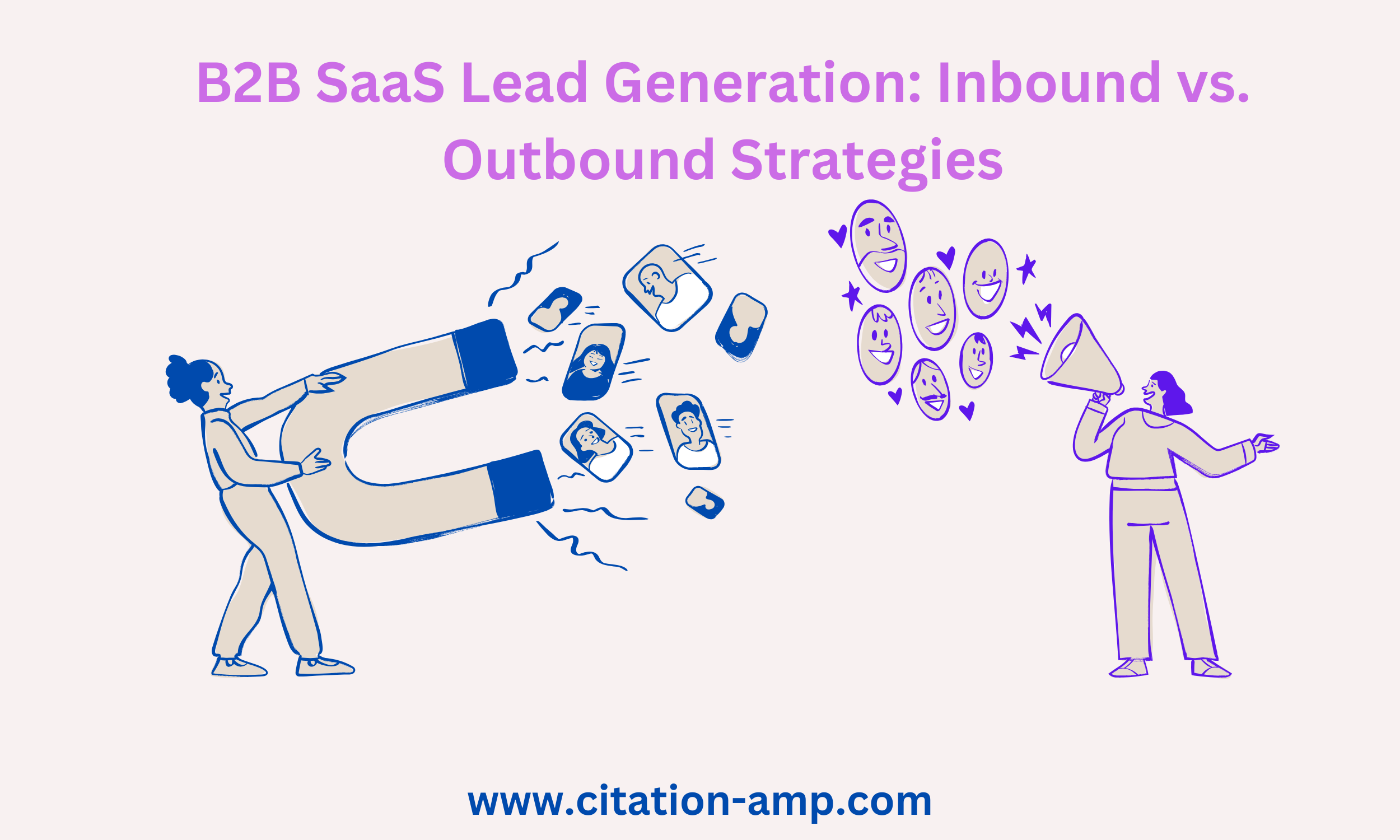Sustainable growth is the heartbeat of every B2B SaaS company. But growth hinges on one crucial engine — lead generation. Getting it right can fuel a steady pipeline of qualified prospects, while getting it wrong can drain budgets and waste valuable time.
If you’re in the B2B SaaS space, understanding the difference between inbound and outbound lead generation — and knowing when to use each — is non-negotiable. Let’s break down how both strategies work, their pros and cons, and how to decide what fits your business best.
What is B2B SaaS Lead Generation?
At its core, B2B SaaS lead generation is the process of attracting and converting businesses that could benefit from your software into paying customers. Because your target audience is other businesses — not individual consumers — the buying cycle tends to be longer, involve multiple decision-makers, and require more trust-building.
Inbound Lead Generation: Attracting Prospects Organically
Inbound lead generation focuses on drawing potential customers to your brand naturally. Instead of chasing prospects, you create content and experiences that make them come to you.
Common Inbound Tactics for B2B SaaS
- Content Marketing: Publish blog posts, whitepapers, case studies, and ebooks that solve real problems.
- SEO: Optimize your website and content to rank for keywords your ideal buyers search for — like B2B SaaS lead generation.
- Social Media: Share thought leadership and engage with your target audience on platforms like LinkedIn.
- Email Marketing: Use newsletters, lead magnets, and drip campaigns to nurture leads.
Pros of Inbound
✅ Builds long-term authority and trust
✅ Generates leads 24/7, even when your team is offline
✅ Costs less over time compared to aggressive outbound campaigns
Cons of Inbound
❌ Takes time to gain momentum
❌ Requires ongoing content production and SEO work
❌ Less control over who finds you — you can’t always target specific accounts
Outbound Lead Generation: Reaching Out Proactively
Outbound lead generation means you actively seek out potential customers. Your sales team or appointment setters initiate contact through cold outreach.
Common Outbound Tactics for B2B SaaS
- Cold Emailing: Sending personalized cold emails to curated lists.
- Cold Calling: Calling decision-makers to pitch your solution.
- Paid Ads: Running targeted ads on platforms like LinkedIn to reach specific job titles or industries.
- Events & Webinars: Directly inviting prospects to demos, product tours, or live events.
Outbound often relies on a mix of sales reps, SDRs, or outsourced appointment setters to connect with busy decision-makers.
Pros of Outbound
✅ Fast way to generate leads and revenue
✅ More control over targeting — you choose who to approach
✅ Easier to scale predictably with the right team and tools
Cons of Outbound
❌ Can feel intrusive if not done well
❌ Requires investment in data, outreach tools, and training
❌ Risks damaging your brand if you spam the wrong prospects
When Should You Use Inbound vs. Outbound?
The best B2B SaaS development company rarely rely solely on one approach. Instead, they blend inbound and outbound tactics to cover both short-term wins and long-term growth.
Use inbound when:
- You want to build brand authority and organic traffic.
- You have time to invest in SEO and content.
- Your sales cycle depends on nurturing and education.
Use outbound when:
- You need results fast.
- You have a clear list of target accounts or industries.
- You’re launching into new markets.
- You can invest in skilled SDRs, appointment setters, or a reliable lead generator to handle outreach.
How to Combine Inbound and Outbound Effectively
Smart B2B SaaS marketers don’t pick sides — they integrate. For example:
- Use outbound to warm up high-value accounts, then support with inbound content that educates and nurtures.
- Retarget outbound prospects with ads or helpful blog content.
- Capture inbound leads and prioritize them for outbound follow-up.
This combined strategy turns cold leads warm faster, shortens your sales cycle, and keeps your pipeline healthy.
Final Thoughts
Whether you’re a startup founder or a seasoned SaaS marketer, understanding when to deploy inbound or outbound tactics — or both — is the key to unlocking steady, scalable B2B SaaS lead generation.
Test, tweak, and refine your approach until you find the balance that works for your niche, sales cycle, and audience.
